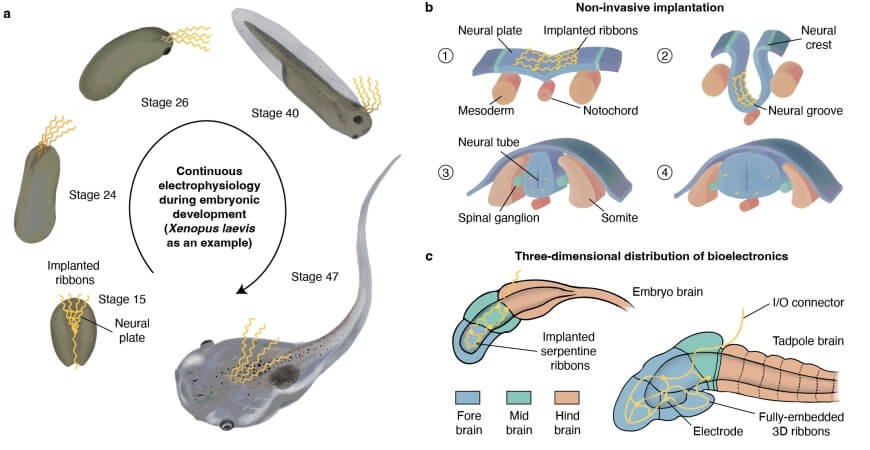Harvard University researchers have created cyborg tadpoles by implanting soft, flexible neural devices into embryos, allowing them to monitor brain activity as it develops. This breakthrough enables scientists to study neurological conditions such as autism and schizophrenia at their earliest stages. The implant integrates seamlessly into the neural plate, recording electrical signals with millisecond precision.
Traditional brain monitoring methods often damage tissue or provide only limited snapshots of development. By embedding sensors into the neural plate before it folds into the brain, researchers can continuously track neural activity without disruption. This approach could lead to new insights into neurodevelopmental disorders and regenerative medicine.
The study represents a major advancement in bioelectronics, offering a non-invasive way to study brain formation. Future research will explore applications in mammals, potentially leading to new treatments for neurological conditions.
Article from Harvard University: Cyborg tadpoles with soft, flexible neural implants
Abstract from Nature: Brain implantation of soft bioelectronics via embryonic development

